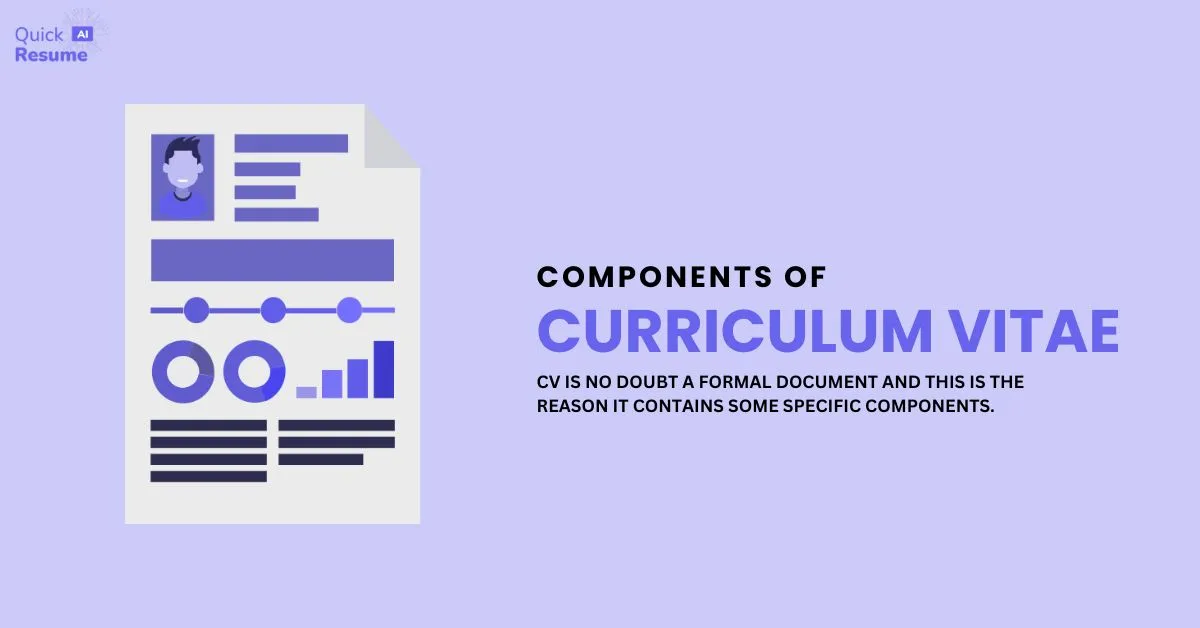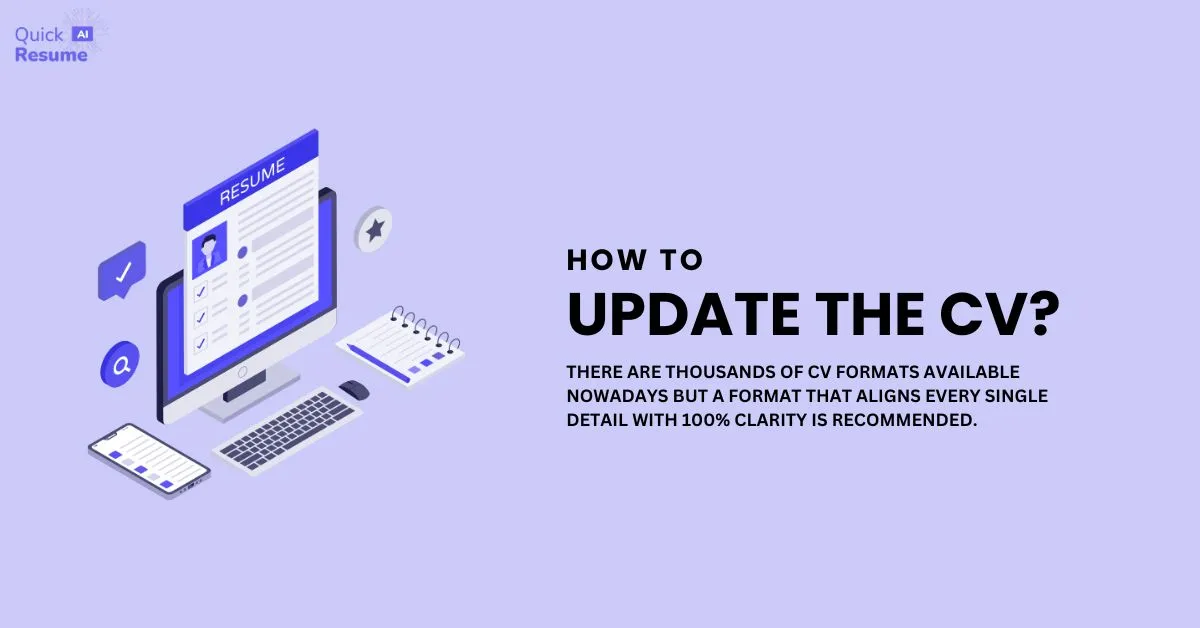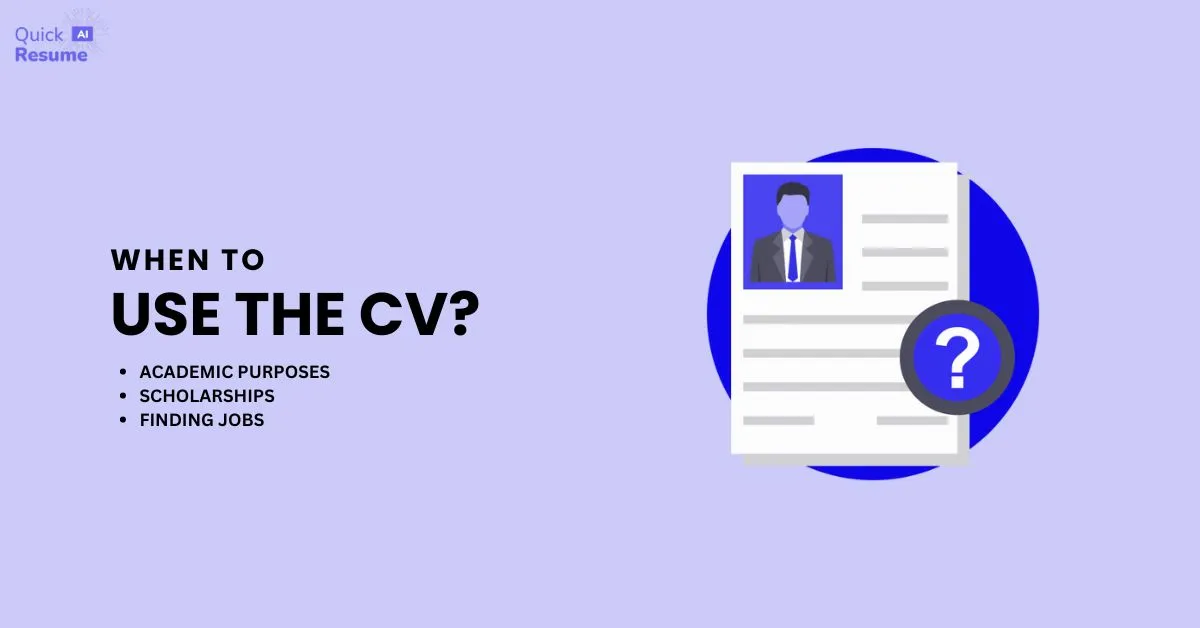
CV stands for “Curriculum Vitae” & it is a document that contains a full history of a person’s academic as well as professional career. It also includes your academic and professional achievements to represent the personality that you’ve built in the field.
Components Of Curriculum Vitae (CV)

CV is no doubt a formal document and this is the reason it contains some specific components. We have highlighted all the components ahead one by one for your easy understanding.
1. Personal Details
This must contain your full name (better add the one that’s written on your identity card), Email address, present Address, and Phone number.
2. Objective/ Summary
Including your summary or objective in your CV leaves an ever-lasting impression on the recruiter.
3. Education
Add your proper educational background to stay in the torchlight.
Follow a descending or ascending order for the understanding of the employer.
4. Experience
Your previous experience in your Curriculum Vitae helps the recruiter filter candidates.
5. Publications
If a person just completed his degree, he can add awards and publications as a supportive factor.
6. Certifications
For a fresher, adding the certificates from your academic career is considered a powerful tool for your CV.
7. Hobbies & Skills
The list of your hobbies & skills helps the recruiter determine if the candidate fits the role or not.
8. References
This component is not a must-have, some candidates recommend it but some don’t. People usually say that the CV for 2nd part of the interview should have a proper document with strong references, it helps to secure your position.
How To Update A CV?

Updating a CV includes:
- Format Choice
- Update Your Data
- Keywords Alignment
There are thousands of CV formats available nowadays but a format that aligns every single detail with 100% clarity is recommended.
1. Popular CV Formats
One-Page CV Format: Limiting to the singular page, this format includes smaller tabs to denote various sections for clarity.
Two-Page CV Format: In this format, data flows from one page to the 2nd one to properly manage appearance.
2. Update Your Data
Make a habit of double-checking your CV information every week. This helps align your CV with updated information, saying goodbye to outdated data.
3. Keyword Alignment
Keyword addition also helps ATS (Application Tracking Systems) to prioritize your Curriculum Vitae. Always go for proper keyword research before adding any to your formal documentation.
When To Use A CV?

A CV can be used for 03 different purposes, mentioned below.
Academic Purposes: To apply for higher education programs, some universities demand CV documentation.
Scholarships: To apply for a scholarship at the master’s level, the committee always asks for CVs to know your study background and achievements.
Finding Jobs: A CV is a must-have for finding a job as a fresher or experienced.
Tips & Tricks
- Always go for formal formatting.
- Use professional terminologies.
- Read your CV twice before they read.
- Lies only spread confusion, avoid them.
Ending Remarks
A Curriculum Vitae is a formal document that includes academic & professional career history. In this article, we have added components and some important factors to help you out in this regard. Read the entire content piece for precise knowledge.


